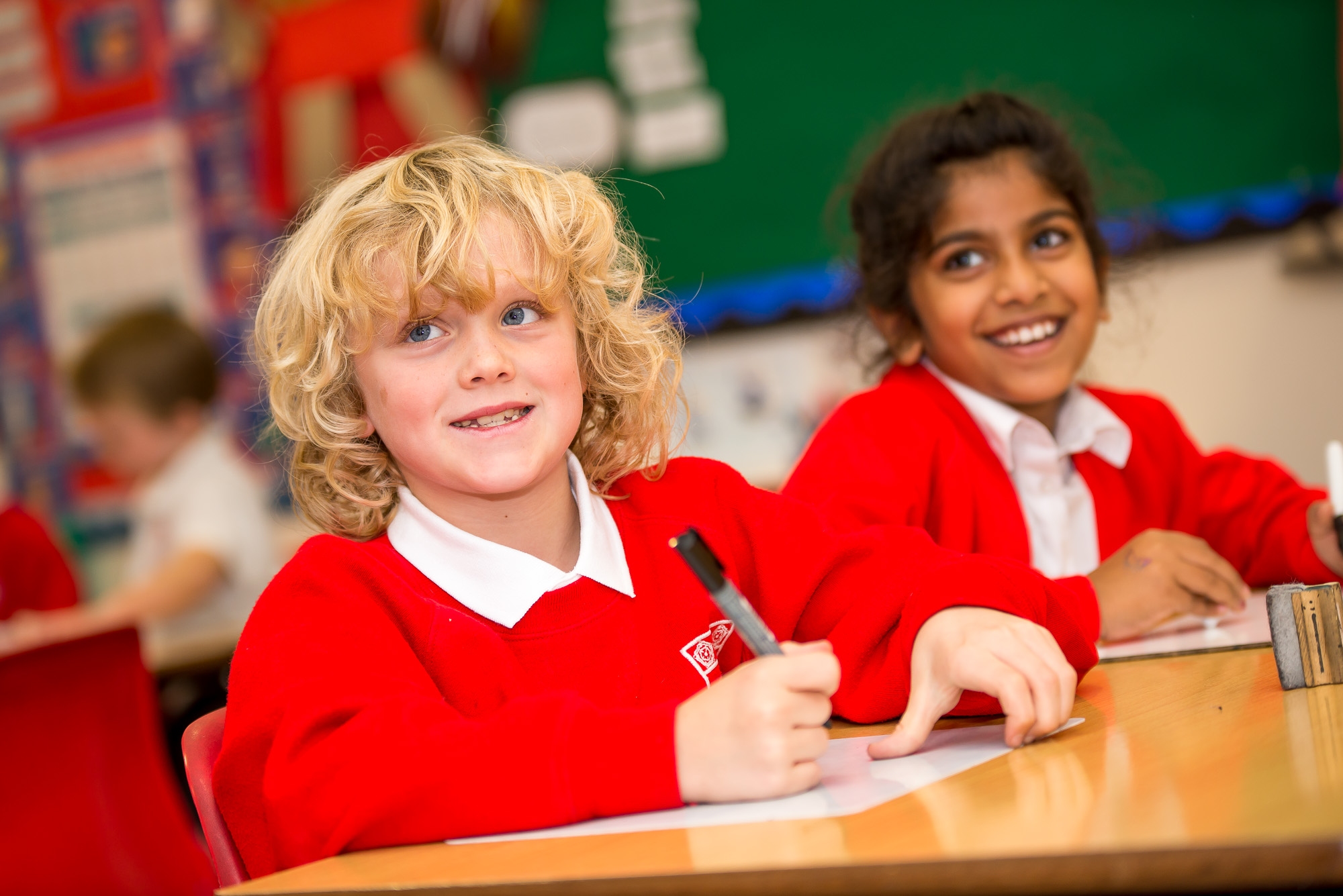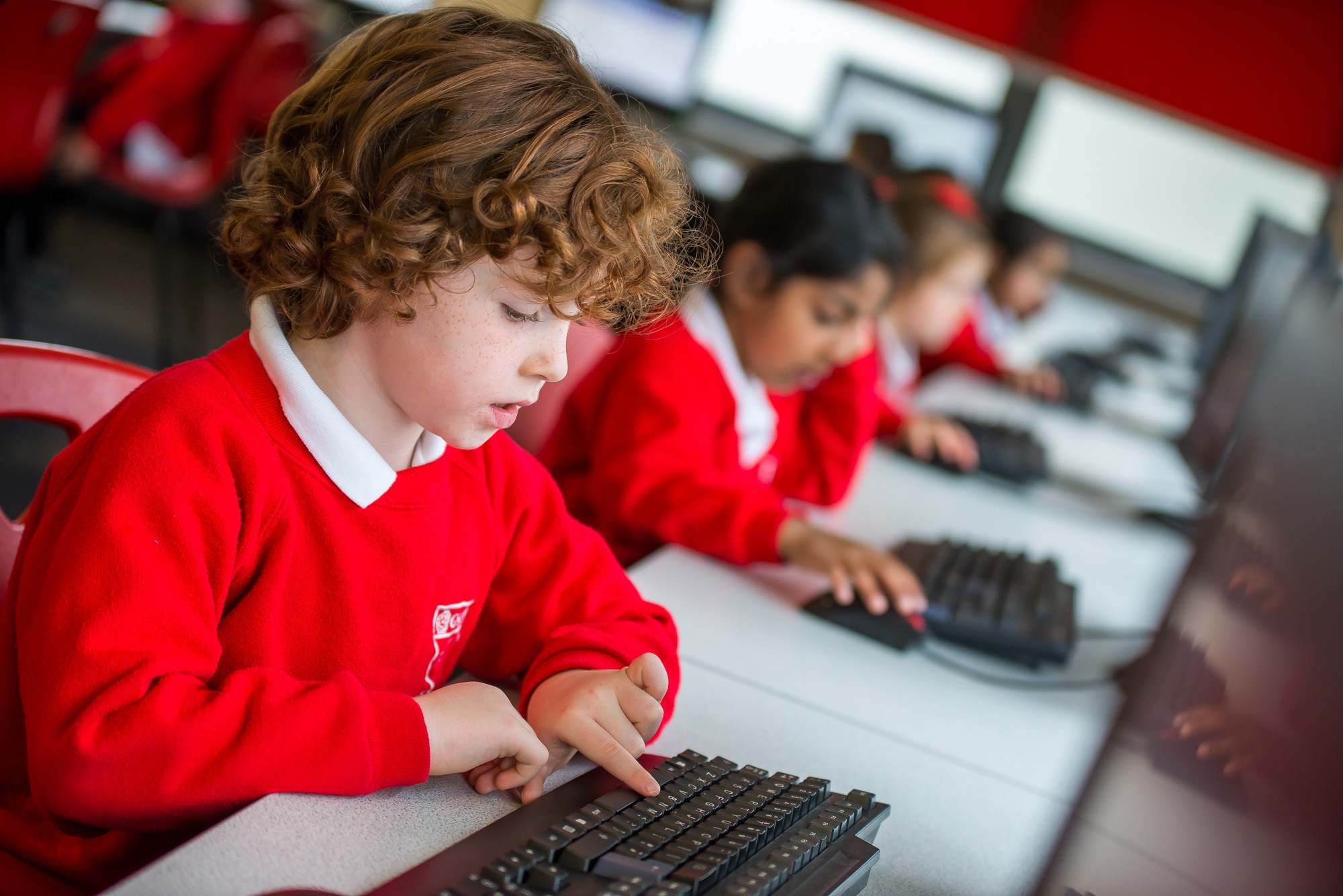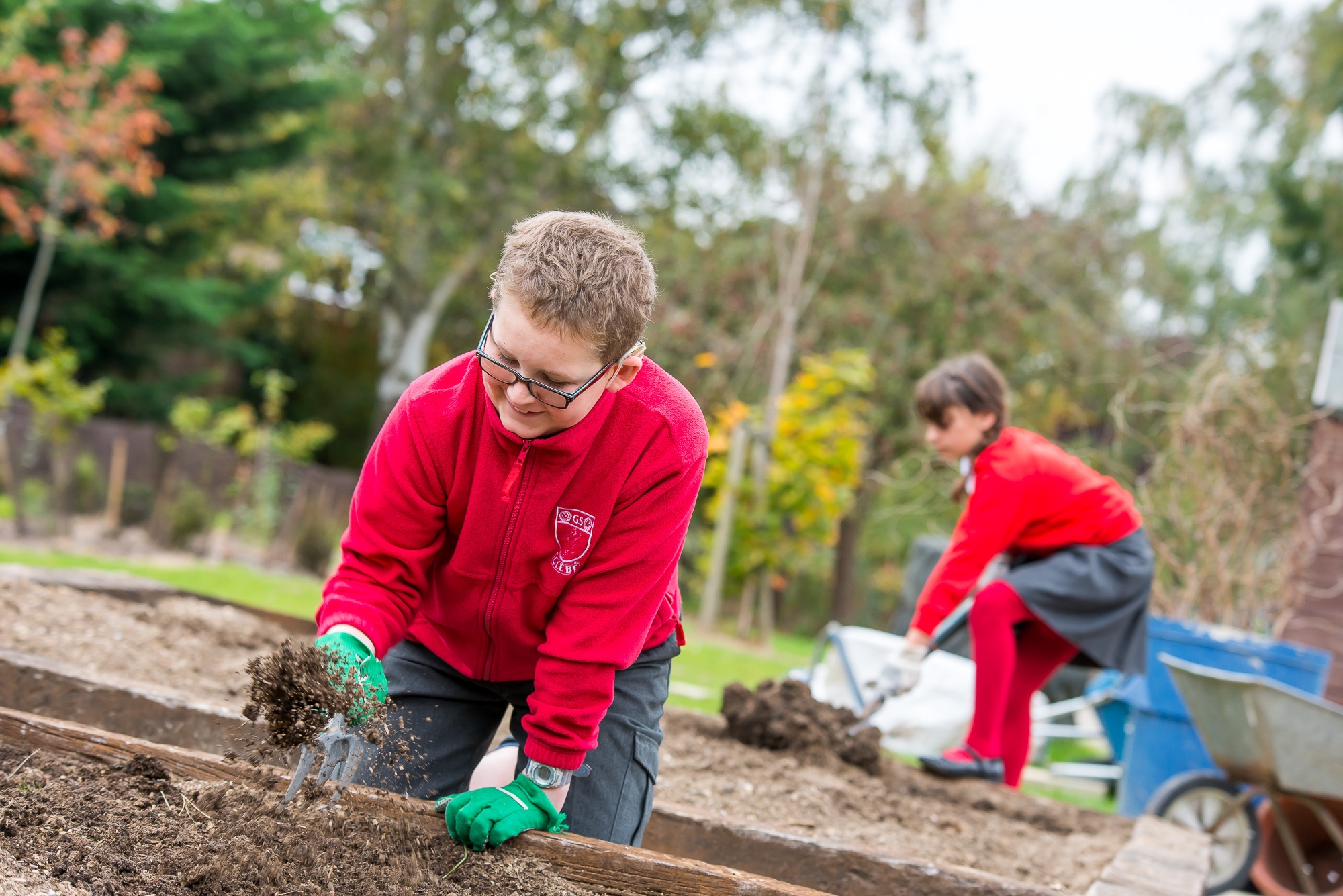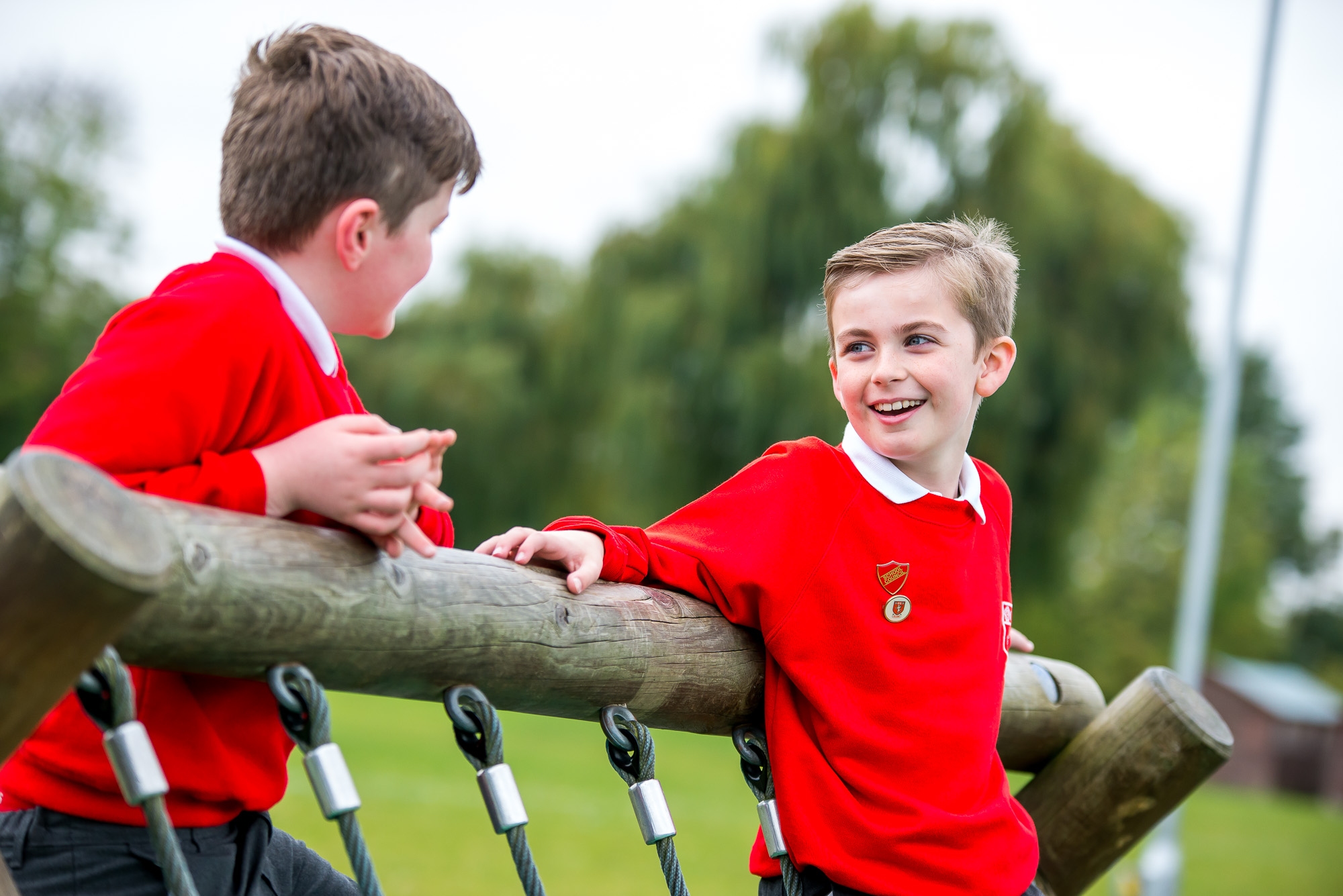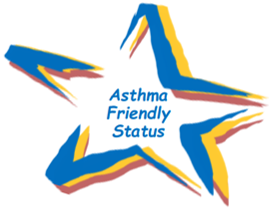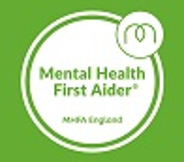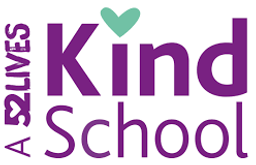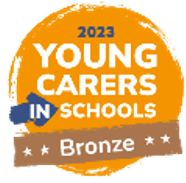
What are the Zones of Regulation?
The Zones of Regulation is an internationally renowned intervention, which helps children to manage difficult emotions, known as ‘self-regulation’.
Self-regulation can go by many names such as ‘self-control’, ‘impulse management’ and ‘self-management’. Self-regulation is best described as the best state of alertness for a situation. For example, when your child takes part in a sports game, they would need to have a higher state of alertness than when, for example, they were working in a library.
From time to time, all of us (including adults) find it hard to manage strong feelings such as worry, anger, restlessness, fear or tiredness, and this stops us from getting on with our day effectively. Children who feel these emotions often find it hard to learn and concentrate in school. The Zones of Regulation aims to teach children strategies to help them cope with these feelings so they can get back to feeling calm and ready to learn. These coping strategies are called ‘self-regulation’.
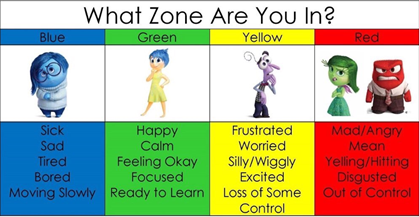
Why are we using them?
At Glebe Primary School, we are launching the Zones of Regulation throughout the whole school. We want to teach all of our children good coping and regulation strategies so they can help themselves when they experience anxiety and stress. In the classroom, sometimes children panic when faced with a tricky learning problem or challenge. By teaching them how to cope with these feelings might make them better at tackling learning challenges and build better resilience so they don’t give up so easily when faced with difficulty.
We want children at Glebe to grow into successful teenagers then adults. Teaching the children at a young age about managing their feelings will support them in later life so that they don’t turn to negative coping strategies which affect their mental and physical wellbeing.
What are the Different Zones?
Blue Zone: low level of arousal; not ready to learn; feels sad, sick, tired, bored, moving slowly.
Green Zone: calm state of alertness; optimal level to learn; feels happy, calm, feeling okay, focused.
Yellow Zone: heightened state of alertness; elevated emotions; has some control; feels frustrated, worried, silly/wiggly, excited, loss of some control.
Red Zone: heightened state of alertness and intense emotions; not an optimal level for learning; out of control; feels mad/angry, terrified, yelling/hitting, elated, out of control.
We will teach the children that everyone experiences all of the Zones. The Red and Yellow zones are not ‘bad’ or ‘naughty’ Zones. All of the Zones are expected at one time or another. We will show them that the Blue Zone, for example, is helpful when you are trying to fall asleep.
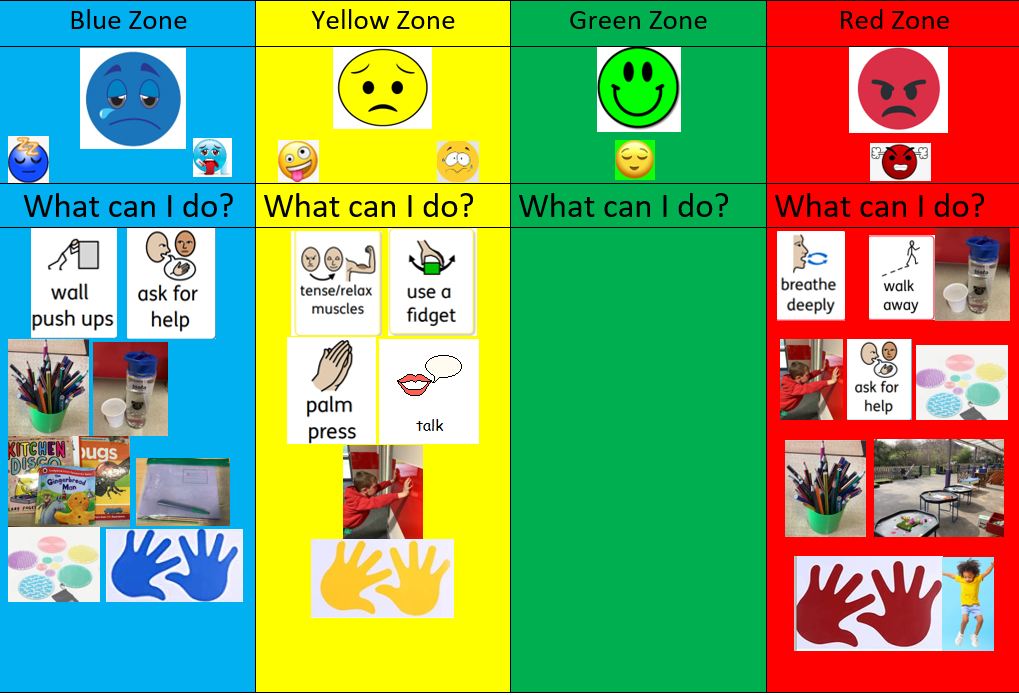
However, we will be helping the children to identify strategies that might help them regulate their anger, their worries or their sadness - for example pressing their hands against the wall, getting a drink, walking away, using a fidget spinner. For the older children, they may be more able to identify strategies that have helped them before. Whereas, the younger children may need adults to suggest techniques for them and find the ones which are successful and which ones are not.
How can you help your child use The Zones of Regulation at home?
- Identify your own feelings using Zones language in front of your child (e.g.: I’m frustrated. I think I am in the Yellow Zone.”)
- Talk about what tool you will use to be in the appropriate Zone (e.g.: “I need to take four deep breaths to help get me back to the Green Zone.”)
- At times, wonder which Zone your child is in. Or, discuss which Zone a character in a film / book might be in. (e.g.: “You look sleepy. Are you in the Blue Zone?”)
- Engage your child in discussion around Zones when they are in the Red Zone is unlikely to be effective. You need to be discussing the different Zones and tools they can use when they are more regulated / calm.
- Teach your child which tools they can you. (eg: “It’s time for bed. Let’s read a book together in the comfy chair to get you in the Blue Zone.”)
- Regular Check-ins. “How are you feeling now?” and “How can you get back to Green?”
- Modelling It is important to remember to show the children how you use tools to get back to the green zones. You might say “I am going to make myself a cup of tea and do some breathing exercises because I am in the blue zone” and afterwards
- Share how their behaviour is affecting your Zone. For example, if they are in the Green Zone, you could comment that their behaviour is also helping you feel happy / go into the Green Zone.
- Put up and reference the Zones visuals and tools in your home.
- Praise and encourage your child when they share which Zone they are in.
Tips for practising the Zones of Regulation
- Know yourself and how you react in difficult situations before dealing with your child’s behaviours.
- Know your child’s sensory threshold. We all process sensory information differently and it impacts our reactivity to situations.
- Know your child’s triggers.
- Be consistent in managing your child’s behaviour and use the same language you use at home.
- Empathise with your child and validate what they are feeling.
- Have clear boundaries/routines and always follow through.
- Do not deal with an angry, upset child when you are not yet calm yourself.
- Discuss strategies for the next time when you are in a similar situation.
- Remember to ask your child how their choices made you feel (empathy).
- Praise your child for using strategies. Encourage your child to take a sensory break to help regulate their bodies.
Common Questions
Can my child be in more than one zone at the same time?
Yes. Your child may feel tired (blue zone) because they did not get enough sleep, and anxious (yellow zone) because they are worried about an activity at school. Listing more than one Zone reflects a good sense of personal feelings and alertness levels.
Should children be punished for being in the RED Zone?
It’s best for children to experience the natural consequences of being in the RED zone. If a child’s actions/choices hurt someone or destroys property, they need to repair the relationship and take responsibility for the mess they create. Once the child has calmed down, use the experience as a learning opportunity to process what the child would do differently next time.
Can you look like one Zone on the outside and feel like you are in another Zone on the inside?
Yes. Many of us “disguise” our Zone to match social expectations. We use the expression “put on a happy face” or mask the emotion so other people will have good thoughts about us. Parents often say that their children “lose it” and goes into the Red Zone as soon as they get home. This is because children are increasing their awareness of their peers and expectations when in the classroom. They make every effort to keep it together at school to stay in the Green Zone. Home is when they feel safe to let it all out.

